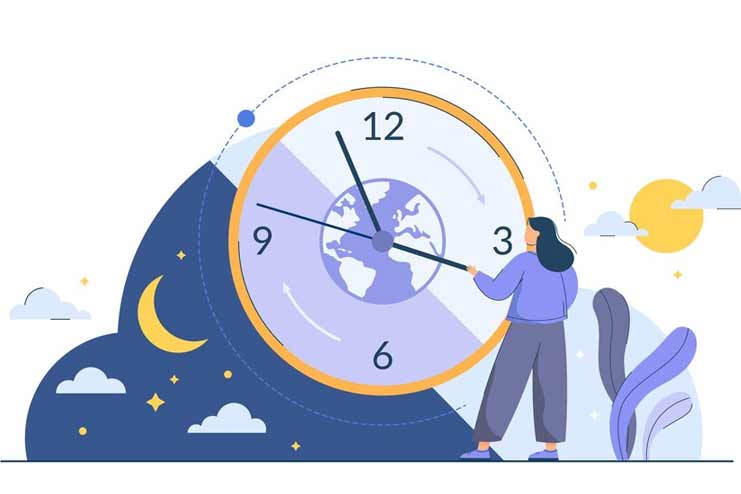Affiliate Disclaimer
Some links in this article are affiliate links. We may earn a small commission if you make a purchase through these links, at no extra cost to you. We only recommend products we find useful to our readersSeasonal changes can have a strong impact on a person’s mood and energy levels. Some are more energetic in the sunny months and feel relatively tired or sad in the cold and darker months. Many people experience mood changes in winter.
The more you understand the seasonal variations, the better you can take charge of your mood and preserve your energy throughout the year.
Seasonal Affective Disorder (SAD) Symptoms

Seasonal Affective Disorder (SAD) is a type of depression that occurs mainly in the fall and winter months. SAD was first recognized in the 1980s by Dr. Norman Rosenthal, a doctor who migrated from sunny South Africa to the US, where he realized he could not be as productive during winter months.
The study (R) on exposure to light helped open up prospects for light therapy for SAD.
Key Symptoms of SAD:
- Feeling tired or sluggish
- Hopelessness and irritability
- Difficulty concentrating
- Changes in appetite or, especially, increased cravings for carbohydrates
- Failure to perform daily functions
Geographic Impact:
- SAD is more prevalent in northern areas with less sunlight, such as with 10% in New Hampshire
- Lower prevalence rates in sunnier regions like Florida (around 1.4%)
What Causes SAD?

Circadian Rhythm Disruption:
Lower intensity and duration of sunlight in winter alters the body clock or circadian rhythm that controls the timing of sleep and mood. Shorter daylight hours affect the pineal gland, leading to melatonin production for prolonged periods of time. In turn, this makes humans feel sleepier during the daytime.
Serotonin and Mood:
- Serotonin’s Role: Serotonin is a neurotransmitter that affects mood. People with SAD have low levels of serotonin, which leads to depression.
- Carb Cravings: The cause of cravings for carb-rich foods by people with SAD is that these carbs can uplift the levels of serotonin in the brain temporarily and thus improve mood, at least for the short term.
- Higher Serotonin Transporter Levels: People with SAD have higher levels of the protein (SERT) of the serotonergic system that decreases the availability of serotonin in the brain in winter, contributing to depression.
Treatment Options for SAD: Light Therapy

Light therapy, also called phototherapy, is a treatment frequently used to treat Seasonal Affective Disorder (SAD) or any mood disorder in general which is sensitive to seasonal variations. It utilizes a light therapy box designed to evoke natural sunlight that most people lack during winter because of short days.
It aims to retrain the circadian rhythm, which influences mood and energy. Consulting a healthcare professional to integrate light therapy into your routine can help balance mood fluctuations throughout the year.
How It Works:
- Mimicking Natural Sunlight: The light therapy box emits a full-spectrum light significantly stronger than usual indoor lighting. Typically, it carries an intensity of approximately 10,000 lux. This is enough to trigger serotonin production in the human brain – one of the neurotransmitters associated with happiness and well-being.
- Circadian Rhythm Regulation: Exposure to light helps regulate the circadian rhythm or the body’s internal clock that controls sleep-wake cycles. Enhanced daytime alertness and increased sleep quality at night improve mood regulation.
- Timing and Duration: It is recommended to use a light box for about 20 to 30 minutes every day, most often upon waking. The amount of time recommended depends on your needs and preferences.
Benefits of Using a Sun Lamp:
- Improved Mood: Regular exposure to bright light can alleviate symptoms of depression, reduce fatigue, and increase overall emotional stability.
- Enhanced Energy Levels: Many report having more energy; they also sleep well and stay awake through the day after adding light therapy into their daily routines.
- Convenience: It can be very convenient and easily fit into your daily routine, allowing you to continue your morning routine while still receiving therapeutic benefits.
Read Also: 5 Best Sun Lamps for Seasonal Affective Disorder (SAD) Relief
Lifestyle Tips for Managing SAD

Maintaining balance in our lives, especially during challenging winter months, goes a long way in keeping our minds and bodies healthy. Here are some lifestyle tips and practical strategies on how to achieve it:
- Synchronize Your Body Clock:
Your circadian rhythm controls almost all biological processes in your body, including the sleep-wake cycle. Stress, shift work, and excess exposure to blue light at night disturb our natural rhythms, and this can in turn affect your mood. Adjust your body clock or circadian rhythm by limiting the use of screens a few hours before bedtime, performing some relaxing exercises that favor melatonin production, and waking up to natural light in the morning. If natural light is insufficient, you might require light therapy lamps to stimulate serotonin production besides improving your mood. - Exercise Regularly:
Exercise frequently as it effectively elevates mood via the release of certain endorphins called serotonin and dopamine, both of which are involved in the regulation of mood. Activities such as brisk walking, strength training, or yoga are highly recommended. Making movement a daily affair will keep your mindset positive and healthy. It will not let you experience lows during the winter months. - Eat a Balanced Diet:
A healthy diet plays a vital role in maintaining stable energy levels and supporting mental health. Diets rich in complex carbohydrates, healthy fats, and proteins provide the brain with constant energy. This prevents blood sugar fluctuations that can cause anxiety, irritability, and brain fog. Avoid fast foods rich in refined sugars, and move on to whole grains, vegetables, lean proteins, and healthy fats for sustained energy throughout the day. - Check Your Vitamin D Levels:
Vitamin D increases serotonin levels, one of the neurotransmitters that control mood. Low levels of vitamin D, especially over the darker months, might give someone symptoms of depression. Consider having adequate levels of vitamin D through exposure to sunlight or supplements and keeping it above 75 nmol/L to increase serotonin levels. - Manage Stress and Prioritize Sleep:
Stress and lack of sleep can affect your mood, energy, and other aspects of well-being. Try relaxation techniques such as yoga, deep-breathing exercises, or meditation to help manage stress better. In addition, consider maintaining a regular sleep schedule so your body receives enough rest to regain strength and wake up feeling refreshed. Quality sleep enhances mental clarity, boosts mood, and ensures that you can be more resilient in tackling problems better.
Apart from these 5 tips, use light therapy as an effective way to manage mood. Sitting in front of a lightbox that filters UV light can help boost serotonin and reduce melatonin production, improving your overall mood during darker months.
When to Seek Professional Help

Recognizing when you need additional help is critical to improving your mental health. Here are some signs that indicate it’s time to consult a professional:
- Persistent sadness or hopelessness
- Changes in sleep cycle or appetite
- Loss of interest in life or activities
- Difficulty concentrating
- Difficulty in making decisions
- Increased anxiety or panic attacks
- Thoughts of self-harm or suicidal thoughts
- Substance abuse
- Impact on relationships and daily life
- Unresolved trauma or loss
- Lack of desire for personal growth
Conclusion
Seasonal Affective Disorder (SAD) can make a difference in how a person feels, especially in the darker months. However, if you have knowledge of SAD, observe its symptoms, and practice management techniques, you will regain your energy and zest for life.
Take care of yourself with simple and practical tips or strategies, such as maintaining a regular sleep schedule, staying physically active, and fostering social relationships.Be aware of your mental health needs and seek help when you need it.
Remember, you are not walking alone in this. With all these tools and resources and using them to your advantage, find ways to bring a balance to your life, irrespective of what season it is. Use all these steps to bring more light and health into your future.
References
- https://www.mayoclinic.org/diseases-conditions/seasonal-affective-disorder/diagnosis-treatment/drc-20364722
- https://www.mind.org.uk/information-support/types-of-mental-health-problems/seasonal-affective-disorder-sad/self-care
- https://www.abbott.in/corpnewsroom/nutrition-health-and-wellness/tips-for-managing-seasonal-affective-disorder.html
- https://foodforthebrain.org/sad-how-to-prevent-and-manage-symptoms-with-nutrition-and-lifestyle-changes
In this Article




















